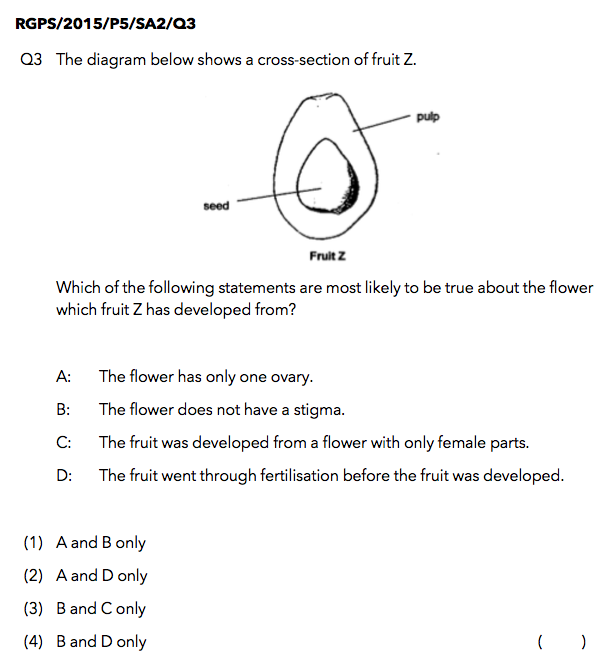In today’s article on Plants, I will be sharing how to interpret questions that involve plants that do not bear flowers.
Do you remember what I shared in my previous article about asking the right questions about plant parts?
Read Also
Here is a list of questions that we need to ask in order to begin our thought process:
- Is the plant be able to bear fruits?
- If the plant is unable to bear fruits, how does it reproduce?
- What are some examples of these plants?
- Are there any special characteristics of these plants that we should take note of?
If you recall what was shared in my previous article, a plant must have a flower with at least a stigma and an ovary, in order to bear fruits.
The stigma allows pollen grains to land on it in the process of pollination. In contrast, the ovary contains the ovule, which stores the female reproductive cell that is needed to fuse together with the male reproductive cell in the pollen grains for fertilisation to take place.
A plant that does not bear flowers would not be able to bear any fruits!
And… you might be wondering, “Are there such plants in the first place?”
Yes! If you still remember, they are called ferns!
Ferns are still considered plants and they have green leaves which contain chloroplasts. These chloroplasts contain chlorophyll to trap sunlight for the fern in the process of photosynthesis to make food for itself.
A fern has a powdery brown substance found on the underside of its leaves called spores. In addition, these spores are stored in spore bags.
This leads me to the next question – we know that pollens grains can be dispersed either by wind, insects or birds.
What about the fern?
The fern does NOT produce nectar to attract insects or birds. It relies on the wind to carry the spores, which are light, away from the parent plant.
Unlike a regular flowering plant, the fern does not involve pollination or fertilisation since it does not bear any flowers.
Question

RGPS/2015/P5/SA2/Q3
Let’s analyse the different options
Option A: The flower has only one ovary.
To begin with, we have learnt that the ovary develops into a fruit after fertilisation and the ovule develops into a seed after fertilisation.
Hence, your child must be able to interpret that a flower with many ovules in its ovary would develop into a fruit with many seeds.
As such, a flower with one fruit must have had only one ovary, from which it was developed.
Option A is true.
Option B: The flower does not have a stigma.
In order for a fruit to form, fertilisation of the egg in the flower’s ovule must have occurred.
We also learnt that pollination of the stigma of the flower is required before fertilisation can take place.
Hence, for the fruit to form, the stigma must be present in a flower.
Option B is false.
Option C: The fruit was developed from a flower with only female parts.
We must be very careful when we come across this key word “ONLY”.
From the development of the fruit from the flower, we can interpret that the flower has undergone pollination and fertilisation.
However, it does not provide us with information on whether there are male parts in the flower. This is because pollen grains can either come from the anther of the same/another flower of the same species.
Option C is false.
Option D: The flower went through fertilisation before the fruit was developed.
The flower must have gone through fertilisation in order for the fruit to develop.
Similarly, we can also state that the flower went through pollination since pollination MUST take place before fertilisation.
Option D is true.
Hence, the final answer would be Option 2.
What’s Next?
In my next article, I will be discussing Science concepts that affect the size of the seed and how it would affect the life processes that take place in a plant.
Stay tuned to find out more! 🙂

If you like our methodology, we’ve some upcoming workshops:







